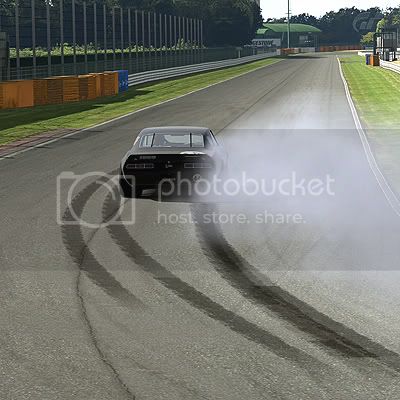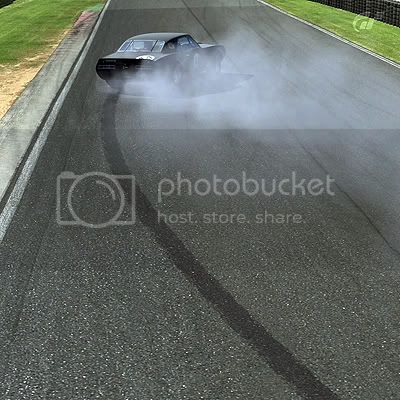- 195
- itstheDRE4M
The following thread is to help our community understand what an Limited Slip Differential (LSD) does exactly.
Testing involves changing one set of values at a time and then running five or more laps on Tsukuba Circuit. By chaning one set of values and comparing Fastest Lap achieved as well as Average Lap.
First lets start with the car being used for the test.
According to Scaff's tuning guide, the LSD cause / effect are listed below:
Initial Torque Settings
Opening (lower values) Improves the cars manoeuvrability. Reduces the effect of the accel. and decel. LSD settings.
Locking (higher values) Increase the effect of the accel and decel LSD settings up to a point, after which the effect will decrease. Reduces the cars manouverability.
Acceleration Settings
Locking (higher value) Increases traction out of corners by limiting wheel spin. Limits the car’s ability to turn, particularly in tight corners.
Opening (lower value) Reduces traction out of corners by increasing the chances of wheel spin. Improves the car’s ability to turn, particularly in tight corners.
Deceleration Settings
Locking (higher value) Increases stability when decelerating into a corner. Limits the car’s ability to turn.
Opening (lower value) Reduces stability when decelerating into a corner. Improves the car’s ability to turn.
Lets being the testing.
Next test will be to raise the Initial Torque setting from 5 to 25 and leave the Accel and Decel values at 5.
Noticeably faster lap times than our previous 5|5|5 test. Lets keep this going and try an Initial of 50. Remember we are keeping the same Accel and Decel values of 5.
My lap times are increasing a lot! We began this test with an Initial of five(5) running a fast lap time of 53.609 and by changing the Initial to 50 we've managed to run a fast lap of 52.826. Since we still have 10more values left we might as well try it, so here we go.
We've hit our fastest lap time yet compared to the beginning of the test. A 0:52.431 is remarkable! we've knocked over a full second off our lap time.
We're done with testing Initial Torque, next is to move on to Acceleration and Deceleration.
So far our fastest lap comes in at 0:52.431 using LSD settings as below
Testing involves changing one set of values at a time and then running five or more laps on Tsukuba Circuit. By chaning one set of values and comparing Fastest Lap achieved as well as Average Lap.
First lets start with the car being used for the test.

Camaro Z28 RM 69'
565hp
550ft-lbs
1085kg
Aerodynamics- F(20) / R(47)
Transmission- 149mph
Brakes- F(7) / R(4)
Tires- Racing Soft
Ride Height- F(-13) / R(-11)
Spring Rates- F(7.1) / R(7.9)
Extension- F(4) / R(5)
Compression- F(3) / R(4)
Anti-Roll- F(3) / R(5)
Camber- F(2.1) / R(1.9)
Toe- F(-0.21) / R(-0.04)
***
NOTE: DURING TESTING ALL OF THESE SETTINGS STAYED EXACTLY THE SAME
****
According to Scaff's tuning guide, the LSD cause / effect are listed below:
Initial Torque Settings
Opening (lower values) Improves the cars manoeuvrability. Reduces the effect of the accel. and decel. LSD settings.
Locking (higher values) Increase the effect of the accel and decel LSD settings up to a point, after which the effect will decrease. Reduces the cars manouverability.
Acceleration Settings
Locking (higher value) Increases traction out of corners by limiting wheel spin. Limits the car’s ability to turn, particularly in tight corners.
Opening (lower value) Reduces traction out of corners by increasing the chances of wheel spin. Improves the car’s ability to turn, particularly in tight corners.
Deceleration Settings
Locking (higher value) Increases stability when decelerating into a corner. Limits the car’s ability to turn.
Opening (lower value) Reduces stability when decelerating into a corner. Improves the car’s ability to turn.
Lets being the testing.
Intial Torque - 5
Acceleration - 5
Deceleration - 5
---------------------------------------------------------
- Inside tire loses traction on every turn.
- No problems with under-steer or over-steer.

Fastest Lap: 0:53.609
Average: 0:53.816
Next test will be to raise the Initial Torque setting from 5 to 25 and leave the Accel and Decel values at 5.
Intial Torque - 25
Acceleration - 5
Deceleration - 5
---------------------------------------------------------
- Inside tire loses traction only on the tighter turns.
- Slight under-steer increase

Fastest Lap: 0:53.266
Average: 0:53.374
Noticeably faster lap times than our previous 5|5|5 test. Lets keep this going and try an Initial of 50. Remember we are keeping the same Accel and Decel values of 5.
Intial Torque - 50
Acceleration - 5
Deceleration - 5
---------------------------------------------------------
- Inside tire still loses traction but quickly regains traction. Barely leaves a visual skid mark.
- Under-steer is becoming more noticeable.
Fastest Lap: 0:52.826
Average: 0:53.041
My lap times are increasing a lot! We began this test with an Initial of five(5) running a fast lap time of 53.609 and by changing the Initial to 50 we've managed to run a fast lap of 52.826. Since we still have 10more values left we might as well try it, so here we go.
Intial Torque - 60
Acceleration - 5
Deceleration - 5
---------------------------------------------------------
- Slight loss in traction only on turns (4) and (8) which are tight hairpins.
- Under-steer is evident.
Fastest Lap: 0:52.431
Average: 0:52.633
We've hit our fastest lap time yet compared to the beginning of the test. A 0:52.431 is remarkable! we've knocked over a full second off our lap time.
We're done with testing Initial Torque, next is to move on to Acceleration and Deceleration.
So far our fastest lap comes in at 0:52.431 using LSD settings as below
Initial Torque - 60
Acceleration - 5
Deceleration - 5
Last edited:


